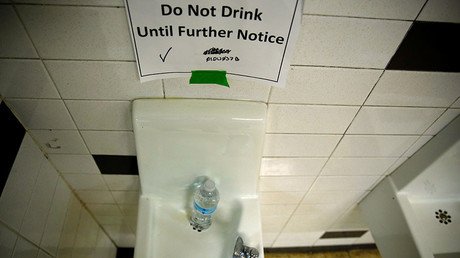Elevated lead levels found in bloodstream of 6k California workers – report

Increased lead levels have been found in the blood of more than 6,000 construction and manufacturing workers in California, a new report says. Such increases can lead to problems such as kidney disease and hypertension.
The report by the California Department of Health's Occupational Lead Poisoning Prevention Program, contains the results of blood tests conducted on 38,440 workers between the years of 2012 and 2014.
Of the workers tested, 6,051 were found to have elevated levels of lead in their bloodstream, which is defined as five micrograms or more per deciliter (about 3.3 ounces) of blood.
Most of those found to have elevated levels of lead in their system were men between the ages of 20 and 59, and had Hispanic surnames. Many lived in Southern California, particularly in Los Angeles, Riverside, and San Bernardino counties.
A total of 14,002 workers had two or more blood lead level (BLL) tests, of which 2,782 (20 percent) were found to have elevated lead levels multiple times. Such chronic exposure increases the risk for health effects including hypertension, kidney disease, cognitive dysfunction, and adverse reproductive outcomes, according to the report.
The findings came as no surprise to Doug Parker, executive director of Worksafe, an employee health and safety advocacy organization based in Oakland.
"It doesn't surprise me. This is a huge problem," Parker said, as quoted by Los Angeles Daily News. "Clearly, there haven't been adequate actions taken" by some employers, he added.
Sixty percent of the workers with blood lead levels at or above 10 micrograms per deciliter work in the manufacturing sector – primarily industries which make batteries, aircraft, aircraft parts, plumbing fixtures, or metal valves – build or repair ships, or recover lead from scrap.
Those with levels at or above 40 micrograms per deciliter were reported to work in industries which handle lead containing bullets and firearms, such as shooting ranges, ammunition manufacturing, gun repair, and firearm instruction, or in metal-related and construction industries.
California’s state government requires employers to provide BLL tests for workers if their jobs require them to use or "disturb" lead, and to take steps to minimize lead dust and fumes.
However, the report warned that many other industries do not test their employees, even if they are likely to come into regular contact with lead.
As such, the document warns that "data presented in this report [does] not fully describe the magnitude and distribution of elevated BLLs among California workers."
It goes on to state that existing Division of Occupational Safety and Health (Cal/OSHA) standards, which dictate what is considered an acceptable amount of lead in the blood are based on medical and scientific information which is over 35 years old.
"There is now convincing evidence that chronic, low-level lead exposure causes harmful health effects," the report states.
In conclusion, the researchers recommended that Cal/OSHA lower the BLL at which workers must be removed from lead exposure, and increases the required frequency of BLL testing. They also suggest that BLL testing be required for all workplaces where lead is used or distributed, regardless of air lead levels, and that the permissible exposure limit be lowered.
The report notes that Cal/OSHA has "taken steps toward revising its two lead standards," and that researchers "expect that fewer workers would experience adverse health effects from lead exposure" if revised standards are implemented.














